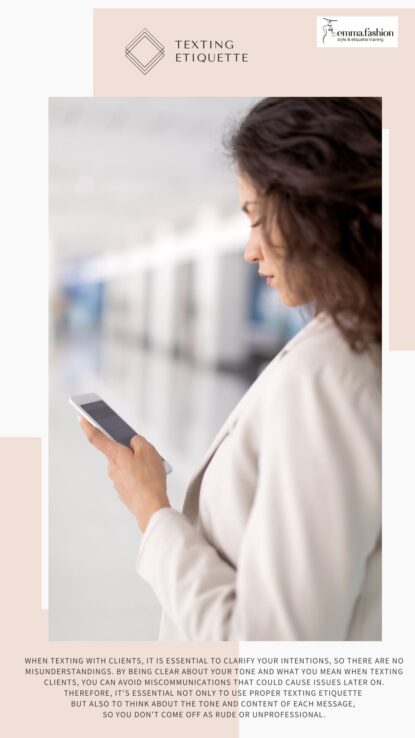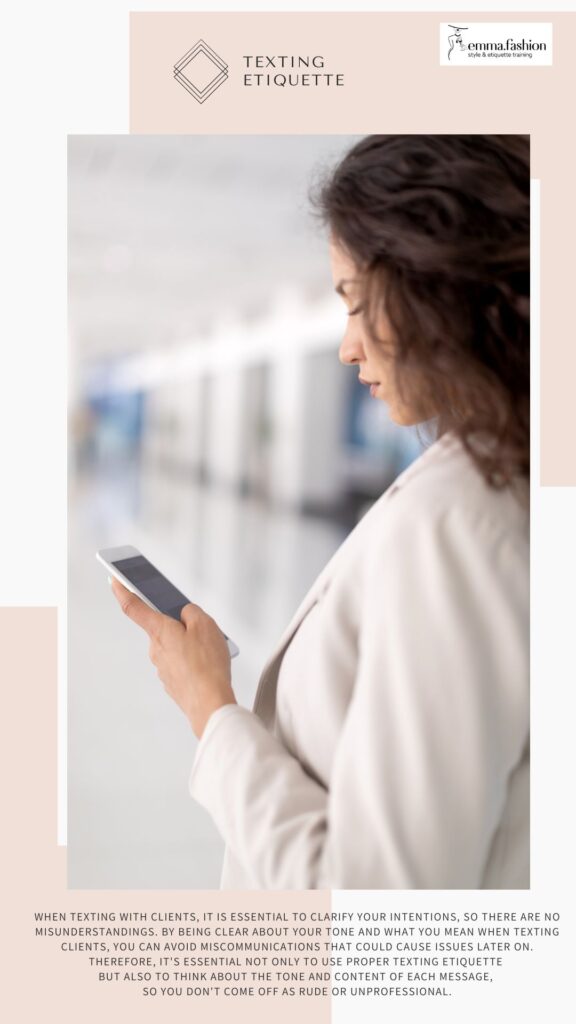How To Send Messages To Clients Via Text Message Properly
Texting is the preferred method of communication for many people. So it’s understandable that you might want to keep your clients in the loop with text messages, especially if texting is the way they prefer to communicate.
When texting with clients, it is essential to clarify your intentions, so there are no misunderstandings. By being clear about your tone and what you mean when texting clients, you can avoid miscommunications that could cause issues later on.
Therefore, it’s essential not only to use proper texting etiquette but also to think about the tone and content of each message, so you don’t come off as rude or unprofessional.
Should you send a text message to your clients?
The answer depends on your relationship with your client.
- If you and your client are close, it can be a great way to stay connected and get the latest updates on their business. If you’re just starting out, it can be a good way to establish trust and rapport. It can also be a fun way to keep in touch between meetings.
- But if you don’t know your clients well or do not have any sort of personal connection with them, it’s probably best to avoid text messages altogether. They can make it seem like you’re trying too hard or that they’re not important enough for you to take time out of your day to talk on the phone or meet in person.
What should you keep in mind before sending a text?
- Text messages are a great way to stay in touch with your clients, but it’s important to do so in a way that is respectful of their time and attention. When you’re working with your clients, you want to make sure that you’re putting your best foot forward. That means making sure that you are sending professional, clear, and polite messages.
- When you’re texting with clients, it’s good to remember that you don’t have the same kind of body language or facial expressions at your disposal as when speaking in person. So it can be easy for things like sarcasm or jokes to get lost in translation.
- Make sure your text reads like a proper sentence. So your client fully understands your message.
- Use emojis and gifs sparingly—they are great for making a point quickly or conveying a feeling, but they don’t always give enough context for everyone to understand what you mean.
It’s essential to think about how you’re communicating with clients via text message so that you don’t accidentally offend them or make them feel like they can’t trust you. When you text your client, keep the following things in mind:
Use text messages as a form of communication only for the clients who ask for updates via text.
Texting is a great way to keep clients in the loop, but it’s best to reserve it for those who ask you. If you start texting your clients without asking, you can create an uncomfortable situation where they feel obligated to respond. On the other hand, if they don’t ask, you can use email or another more formal form of communication.
Only send a text when you have an important message for them.
Texting is fine for quick questions, but if something more serious comes up, consider talking over the phone or meeting in person instead. So, make sure it’s important enough that it couldn’t wait until the next time you talk in person or on the phone—and also make sure that you respond immediately after they get back to you.
Don’t send more than one message in a row (at least not without checking back with them first).
You need to be careful about how often you send them. Sending too many texts can be annoying, and it might make your client think that they can’t talk to you without getting a text back.
Be polite, but don’t be overly friendly.
Make sure your texts are friendly and professional. They shouldn’t sound like you’re trying too hard—like how you’d speak to someone face-to-face would be appropriate for a text conversation with a client.
Remember that texting is casual and informal; if you need to convey something serious or formal, use another method of communication like email or phone calls instead of texting so your client doesn’t think less of you for being informal about things!






Comments